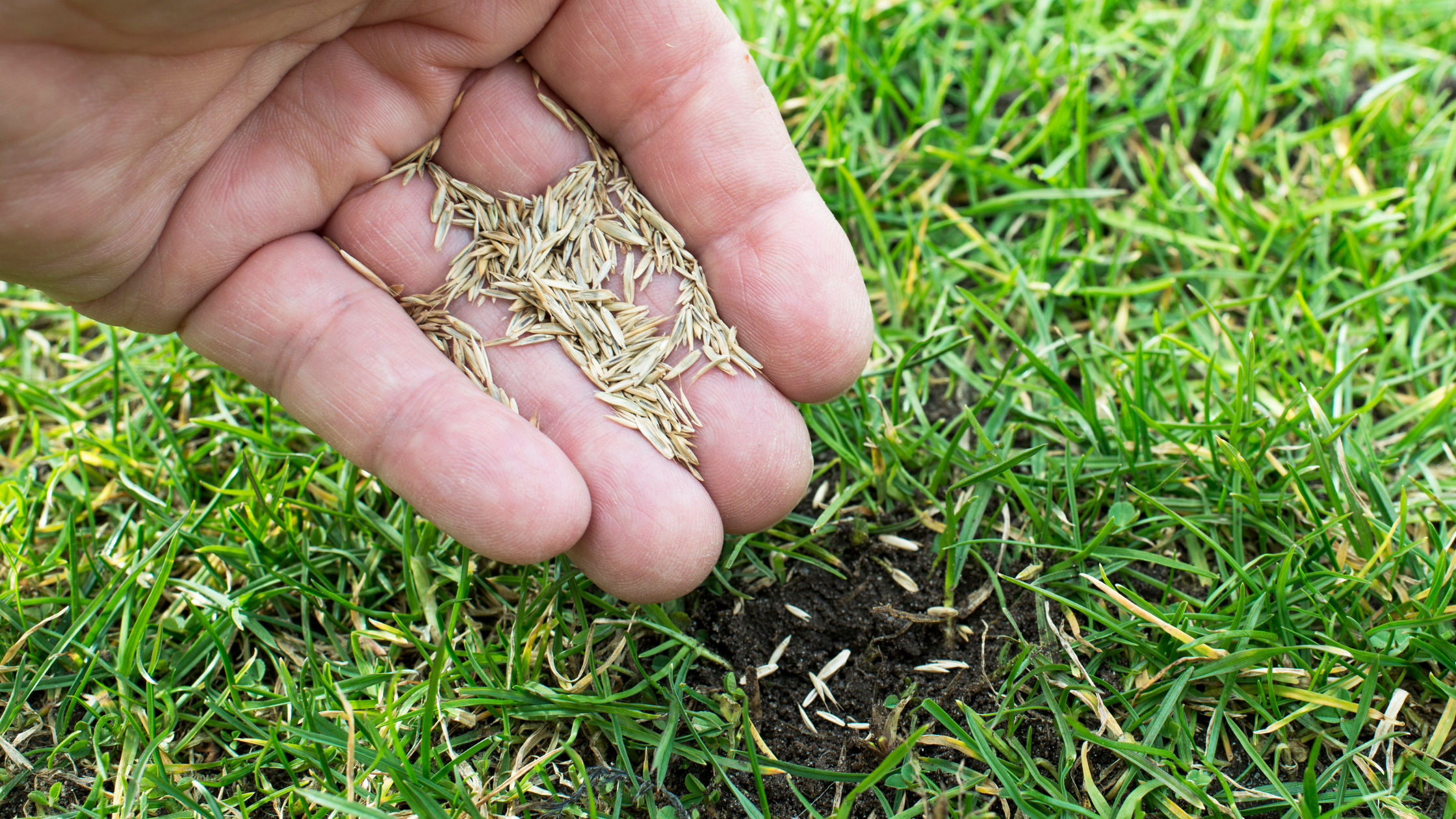The late summer and early fall is by far the best time to seed your lawn and ensure a healthy and lush lawn for the coming year. This timing allows for better germination results and shields your new growth from stress caused by hot and dry conditions. As many of our customers take advantage of our popular seeding options, we wanted to take a moment and put together some best practices for caring for your lawn after seeding.
Watering
Watering is THE most important thing you can do to ensure the best results after seeding and will require much more attention during this critical germination period.
For the first 3-4 weeks after seeding, you should plan to lightly water your lawn 2-3 times a day for 5-10 minutes each time. While this may seem like a lot of work, it is critical to keep the seed moist as it is particularly susceptible to stress caused by drying out. If your lawn is set up with an irrigation system, be sure you adjust it during this period to avoid under or overwatering, or talk with your irrigation technician and inform them ahead of time that you’re planning on seeding your lawn.
Be careful not to confuse watering frequency with amount. Watering a newly seeded lawn too much and too fast can lead to overwatering where runoff lifts seeds from the soil bed and washes them away.
Lastly, don’t forget to keep your normal watering practices up as well to make sure the established parts of your lawn are getting the water it needs. For more information on best practices for watering your mature lawn, check out our blog post Watering: Getting It Right.
Mowing
While we all love the look and smell of a freshly mown lawn, it’s best to play the waiting game to give your new seedlings a fighting chance. As a rule of thumb, you should plan to wait until your new grass has reached the height you’d normally think about mowing, most likely ~4” in height. This ensures enough rooting has taken place to withstand the stress of its first cut. After this, additional mowings will encourage your new grass to thicken up and spread out, rather than wasting energy trying to grow overly tall. While it is always important to keep your blades sharp, your new grass is especially susceptible to the damage that can be caused by a dull blade tearing at the grass—-so be sure those blades are sharp!
For more information and tips on making the most of your mowing, check out our blog post Mowing: Getting It Right
How Long Will It Take?
There’s no one set answer to this question, as it all depends on your watering habits and the type of grass you’re trying to grow. In our case, we seed with a mix of Kentucky Bluegrass, Perennial Ryegrass, and Fescues in order to ensure the best possible performance in a range of sunny and shady areas, while offering a lush, full, coverage of your turf. Depending on conditions, germination can start in as little as 7 days, but will continue on for 3-5 weeks.
When Can I Walk on It?
Lawns are meant to be enjoyed, but the longer you can stay off your newly seeded lawn, the better its long-term results will be. As a rule, seeded areas should be kept free of foot traffic—both human and pet—for 3 weeks, but ideally until it has been mowed one or two times.
For any additional questions about seeding, or to be added to the waitlist for this popular service, please reach out!
